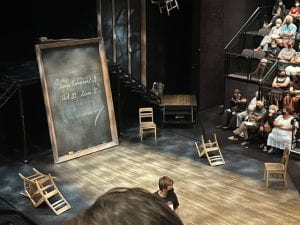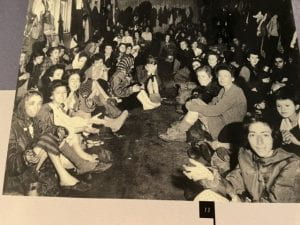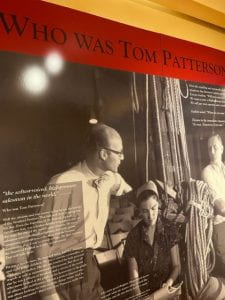At the beginning of the closing argument in the assault trial of Tom Robinson in the novel To Kill a Mockingbird, the defense attorney, Atticus Finch, addresses the jury “as if they were folks on the post office corner” (203). Harper Lee, wanted to portray Atticus as a country lawyer with a conscience, but one who did not hold himself above the common people of Maycomb. He taught his children to respect every person, even the angry, fatally prejudiced Bob Ewell or the furiously demented Mrs. Henry Lafayette Dubose (who calls Atticus a “nigger lover”).
The first attempt to bring To Kill a Mockingbird to drama was the Gregory Peck movie in 1962, two years after the publication of the novel. The movie had profound reverence for the novel, quoting large portions of the original dialogue and portraying the Scout, Jem and Dill characters with child actors. Mary Badham, who portrayed Scout, was the youngest ever to be nominated for Best Supporting Actress to that date. In the most recent production at the Fox, she returned as the bitter, unbalanced Mrs. Henry DuBose, more of a bit part than the character in the novel. Horton Foote’s adaptation won the Academy Award for Best Screenplay – Based on Material from Another Medium
Using child actors and a mild-mannered Gregory Peck gave the movie a sweet innocence and a remorseful conclusion to the courtroom drama, rather than the fiery outbursts of the successor renditions on Broadway and most recently at the Fox. Peck won an Academy Award for his philosophical Atticus, a country lawyer without pretense.
In the Broadway play, what the audience most remembers is the closing argument in the courtroom from Jeff Daniels, as he challenges us to rise against prejudice wherever we find it. The final words of the play are the same as those we hear at the beginning when the judge enters the courtroom, “All rise.” Aaron Sorkin is less committed to understatement and empathy than Harper Lee.
I love Jeff Daniels, so it pains me to say he was not cast correctly to play an aging, frail attorney, who keeps many of his opinions to himself, and who reveals his sharpshooting skills only in a desperate emergency. Daniels cannot conceal his broad shoulders and more solid build, so he cannot faithfully represent the more lanky Finch, who constantly asserts he is too old for physical activities in the novel.
The actor I have always considered for Atticus is “Law and Order’s” Sam Waterson, who played a similar character to Atticus (Forrest Bedford) on a television ripoff of Mockingbird “I’ll Fly Away.” Waterson has the shaky voice and lean build needed for the character of Atticus, who is superficially weak, but powerful in conviction and determination. Daniels is good with the wry humor, but he is an imposing figure, no matter how you dress him, a character it is hard to underestimate.
So my hopes for Atticus were sunk by the passionate attorney Aaron Sorkin depicted in his adaptation of the novel. Jeff Daniels played a mercurial Atticus on Broadway and reached heights of righteous anger in his closing argument. In one segment of the argument Daniels steps to the front of the stage and urges us in the audience to oppose racism in our midst. It is a tirade against passive neglect. In an interview Daniels said that the contemporary Atticus could not wait for racists to find their “better selves.” (https://www.youtube.com/watch?v=EfsFeMRF7CU).
I wondered if Richard Thomas would play a different Atticus when he took To Kill a Mockingbird on the road. I saw him sear the courtroom with his fury at a Thursday evening performance (March 9) at the Fox in St. Louis.
If anything, his closing argument was even more over the top than Jeff Daniels. He dramatically tossed his closing argument script aside and exploded about the gross double standards we hold about race. It is Richard Thomas at peak ferocity, scorching the dialogue so it was barely understandable.On the apron of the stage he declaimed about how much work we have to do, not in Maycomb, Alabama, but in our own communities.
In the history of dramatic productions the passion of Atticus Finch has grown exponentially from Gregory Peck to Jeff Daniels to Richard Thomas, the contemporary versions making Atticus louder and more desperate than the country lawyer of the novel. He is more like Mr. Smith Goes to Washington, if you want to add Jimmy Stewart to the mix. There is no understatement in the contemporary portrayals, because Mockingbird has become a message performance, perhaps a needed message, but not what Harper Lee had in mind when she wrote the novel.
Is it just the medium of theater that urges more and more passionate portrayals of heroic figures or have the writers and actors rendering this novel decided that the loudest voice gains the most respect? That is what I wonder, having read the novel and seen two theatrical performances. I am not a purist, who insists dramatic performances must be faithful to the novels they portray, but I am mindful of the unique heroic figure we grew to love in the original Mockingbird.
What I miss is the heroism of the Everyman character, who surprises us with his determination against overwhelming odds. He takes a stand the way most of us hope we would, if we had the courage of our convictions. He shows us what ordinary people are capable of, a nerve, a “grace under pressure”– Hemingway’s definition of courage. That is what I miss in the elevated portrayals of Atticus by Daniels and Thomas.
Atticus Finch has survived as an American hero by his nobility of character. He is not so much heroic, as he is steadfast. But that is why we admire him.










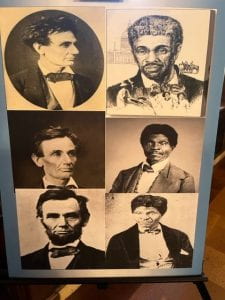

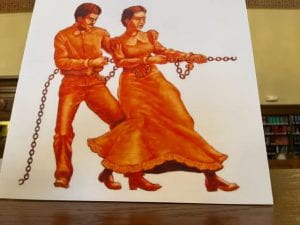


 Shah
Shah  Pfeiffer
Pfeiffer  Carlson
Carlson  Ingraham
Ingraham 
